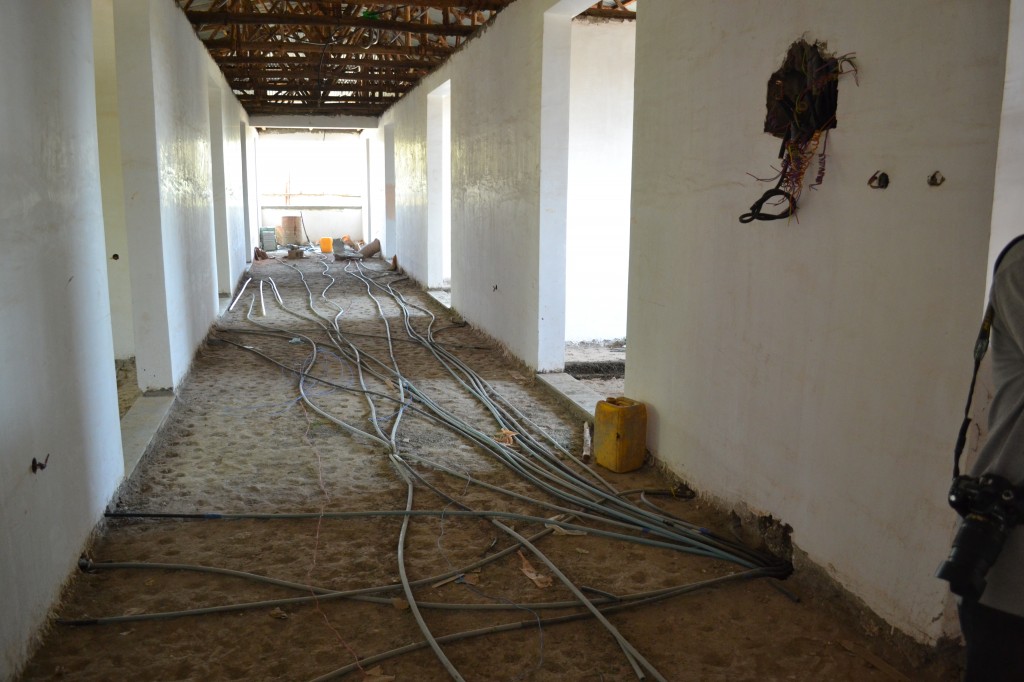A photo essay and update on the mother and child hospital Holt is helping to build in Shinshicho, Ethiopia.

In 2010, the Holt-funded maternal-child hospital in Shinshicho, Ethiopia didn’t start off looking like much — just hollow cement walls framed by rough wood scaffolding. Without a roof or floor, rain turned the empty, 40,000 square foot space into a giant, mud-splattered maze. It was hard to imagine the finished product. But hundreds of people believed in the space — believed it was a place the Lord would bless — and together, through sacrifices of time and money, the humble foundation has begun to transform into a state-of-the-art health care center, complete with surgical labs, X-ray rooms and more than 100 doctors trained in advanced care. And with the transformation of the building has come an improved livelihood for families in the region.
Although the hospital — which will focus on women’s and children’s health, but serve all patient’s needs — isn’t quite complete, already the people of Shinshicho can feel its impact. In this impoverished region home to about 250,000 people, more than 200 Shinshicho residents found jobs working on the hospital, which helped provide stable income and invaluable training. Once the hospital opens, it will be another tool to help Holt achieve its vision: a world where every child can grow strong and healthy in a loving, stable home — and whenever possible, within his or her birth family. Ethiopia is largely a patriarchy, but the hospital is shining a spotlight on the importance of maternal and child health — since strong, healthy women tend to strengthen families and children.
When the Shinshicho Mother and Child Health Center opens this year, it will be the first hospital in the region. In the meantime, a small clinic provides the only medical care within 20 miles. When Holt began our work in Ethiopia in 2007, we aimed to help strengthen vulnerable families, but soon recognized that the limited health care options in the region were creating a huge barrier to our mission. Those facing life-threatening injuries, such as childbirth complications, had two options: they could risk walking to the nearest hospital, or they could hope for the best. Elders in the area estimate that thousand of women and children have died from preventable causes. That’s why the hospital is so important, and why locals rallied around the building project — even donating their own funds. Many people here live on less than $2 per day, but together they pooled nearly $200,000 for the project.
In September 2013, a web of volunteers coordinated the shipment of medical materials — donated by hospitals and clinics in and around Holt’s headquarters in Eugene, Oregon — to Shinshicho. Two shipping crates, filled with X-ray equipment, hospital beds, wheel chairs and more are scheduled to arrive in Shinshicho soon, after facing delays in the port of Djibouti. The arrival of this shipment will allow the hospital to enter its final phase: completion.
Here, we outline the latest hospital developments and show you photos of the building progress. The hospital is in its final construction phase, and we plan to hold an official opening ceremony this spring, 2014.














Learn more about Holt’s work in Ethiopia!
See how sponsors and donors create a brighter, more hopeful future for children and families in Ethiopia!





Wow, this is wonderful to see! We are blessed by your update, and especially the photographs. I was able to give some to this project and am inspired to give more, too… the photos and report are so encouraging, and I look forward eagerly to hearing of progress a year, two, five, down the line. God be with you in Ethiopia.
Love,
Sam